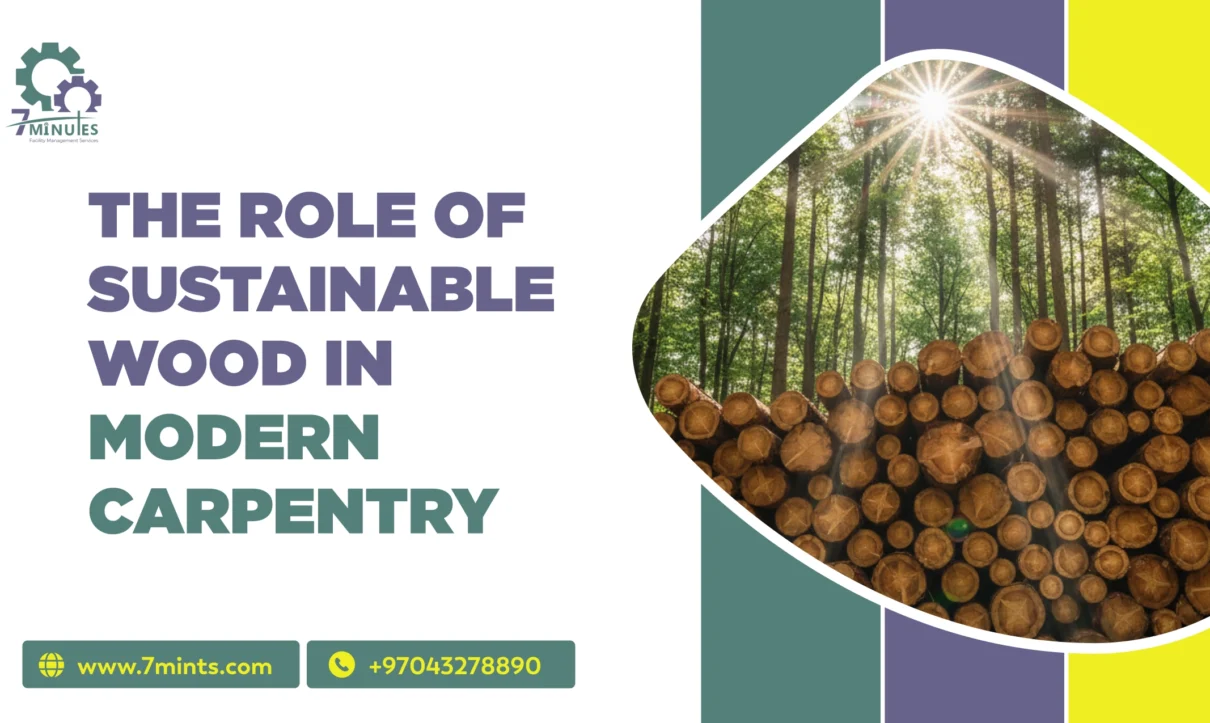In the current era, where sustainability and environmental awareness are at the top of the priority list, the materials that we employ in our day-to-day lives are very important. And the ultimate reason behind this change is none other than eco-friendly wood.
The artisans and designers of this era are not only covering the earth with such eco-friendly materials but also making the planet’s surface very attractive, producing long-lasting, high-quality items that are appealing to the senses. Let’s discuss how wood that is eco-friendly is completely changing the face of carpentry today through its environmental impacts and its versatility in design, along with its value in the long run.
What Is Sustainable Wood?
The term “sustainable wood” defines a product that comes from a forest that is being eked out under the stewardship of the three Rs—environmental respect, social duty, and economic growth. To put it simply, it is a matter of utilizing wood in such a way that it does not cause damage to nature or rob the resources that are going to be needed by the next generations.
Such forests are managed under very strict rules and regulations to make sure that for every tree cut down and used for wood, another tree will be planted; at least that species will be left to flourish, and in some cases, the whole ecosystem will be left to live together and thrive. Moreover, the locals will be provided jobs to take part in the whole process of tree cutting, planting, and harvesting. The existence of certifications like FSC (Forest Stewardship Council) and PEFC (Programme for the Endorsement of Forest Certification) helps to identify wood that meets these sustainability standards.
Using sustainable wood is a matter of principle, but it is also a matter of good economic choice. When it comes to quality and endurance, this wood, in most cases, is better than the mass-produced types of timber. Hence, it can be said that the modern carpenter should always use “sustainable wood” as one of their main materials in their projects.
The Importance of Sustainable Wood in Contemporary Carpentry
The changeover to sustainable wood in carpentry is not a fad; it is a move endorsed by the environment and the new consumer values. Here are the points that tell the importance of it:
a) Decrease of Overall Environmental Footprint
The conventional logging process usually results in deforestation, loss of wildlife, and soil erosion. On the other hand, the use of sustainable wood promotes the balance of nature. This supply mechanism helps in the battle against the climate crisis and, at the same time, ensures that the animals have a place to live.
b) Supporting Proper Forest Management
Wood from sustainable sources is characterized by good forest management practices—better care of the environment in the long term, rather than focusing on obtaining quick profit in the short term. When carpenters use certified sustainable wood, they do not just support these moral practices but also the benefits for the whole industry.
c) Accommodates a Larger Consumer Base
Features that Make Sustainable Wood the Ideal Choice for Carpentry
The use of sustainable wood is not only good for the environment, but it also provides quality materials for the creation of artifacts. The following are some characteristics that set it apart:
a) Outstanding Strength and Longevity
b) Natural Aesthetic Appeal
Different types of sustainable wood bring along with them different grain patterns, textures, and colors that contribute to the beauty of that particular design. It could be a rustic dining table or a sleek modular cabinet; the presence of sustainable wood will ensure that the piece exudes a timeless charm.
c) Easy to Work With
d) Long-Term Value
In the case of sustainable wood, the price is indeed a little bit on the higher side initially, but it is worth it when you consider the wood’s durability and the little care needed. Wood doesn’t easily warp or crack, so the number of times one would have to replace it or repair it is less.
How Sustainable Wood Supports Eco-Friendly Construction
a) Reduces Carbon Footprint
Wood has the property of being a carbon sink, which means it absorbs carbon dioxide instead of emitting it into the atmosphere. The use of wood in construction means that the carbon will stay trapped for a long time, and hence the building will have the least carbon footprint. So, in itself, the sustainable wood leads to climate-friendly construction. Check out our latest blog post on Top 10 Joinery Innovations Changing Woodworking Today.
b) Promotes the Use of Green Resources
The sustainable forestry method makes it possible to have trees standing, trees cut down, and trees planted all the time—an endless supply chain that feeds and does not take away from the earth’s resources.
c) Improves Indoor Air Quality
Challenges in Advancing Sustainable Wood
Sustainable wood, for all its virtues, still has to contend with some challenges.
a) Higher First Cost
The wood that is coming from the well-managed forests of sustainable sources carries a higher initial cost. However, the long-term benefits, which include durability, less maintenance, and the value of righteousness, make the initially paid price justified.
b) Lack of Information
The majority of consumers and even small carpenters are not aware of the benefits of using sustainable wood. This ignorance is a significant barrier to the acceptance of sustainable wood. Telling, certifying, and government support can get rid of this problem.
c) Mislabeling in the Market
Not every wood marked as eco-friendly is actually so. Some manufacturers misuse terms just to attract the attention of green buyers. Therefore, the wood’s actual sustainability claims must be confirmed through certification documents such as FSC or PEFC.
The Future of Carpentry with Sustainable Wood
Due to technological innovations like engineered sustainable timber and reclaimed wood, eco-friendly carpentry is not only getting easier but also cheaper. Besides, architects and interior designers are showcasing the co-existence of luxury and sustainability by incorporating sustainable wood into the modern aesthetics.
Carpenters who pick sustainable materials are not only making furniture or interiors—they’re crafting a future that values nature, responsible living, and long-term quality over short-term gain.
Conclusion
Sustainable wood usage was a major factor in the development of modern carpentry. By using forest-managed and ethically sourced wood, carpenters and homeowners alike are taking an active part in the safeguarding of forests, lowering CO₂ emissions, and promoting a healthier Planet.
In the 21st century, where sustainability has become an imperative, the use of sustainable wood still reigns as the foundation of responsible design and construction. It is not just about creating the most beautiful spaces; Contact us as it is also about building a future that lasts. Thus, the next time you see a beautifully designed wooden product, just remember that real craftsmanship does not just shape wood; it also shapes the world it has come from.










1 Comment
Comments are closed.